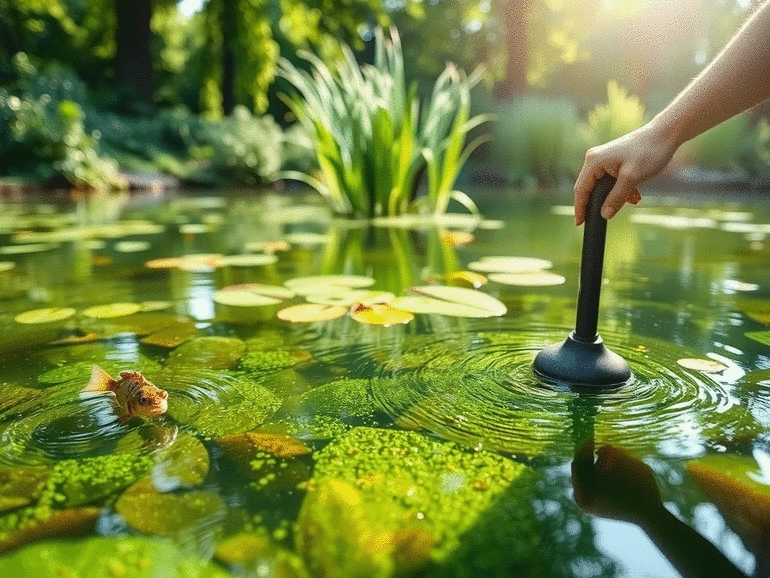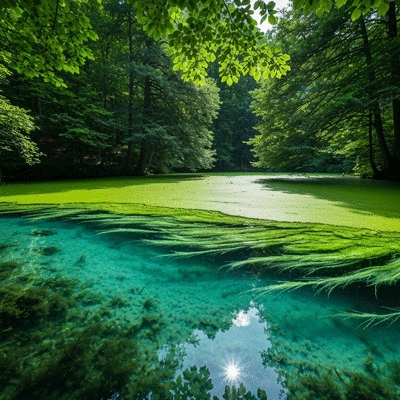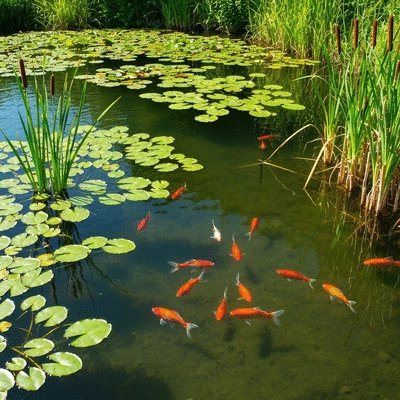
Have you ever gazed into your pond, only to find it overrun with unsightly algae? Understanding the nuances of pond algae can transform your aquatic experience and restore the beauty of your water garden.
Understanding the different types of pond algae, their impact on the ecosystem, and effective control strategies is crucial for maintaining a healthy and clear pond. The visual below outlines key aspects of pond algae and how to manage it sustainably.
Pond algae growth can be a real challenge for any pond owner, but understanding the types of algae and their causes is the first step in tackling this issue effectively. At Clear Pond Solutions, I always emphasize the importance of knowledge in maintaining a thriving aquatic ecosystem. Algae can quickly turn a beautiful pond into a green mess, making it crucial to identify the problem early on!
So, what exactly is pond algae? It is a simple organism that thrives in water and can multiply rapidly under the right conditions. Understanding its nature helps in managing it effectively. Let’s dive deeper!
Pond algae can be broadly categorized into several types, including green algae, blue-green algae, and filamentous algae. Each type has unique characteristics and growth patterns. Here’s a brief overview of the most common types:
The primary causes of algae blooms include excess nutrients, particularly phosphorus and nitrogen, poor water circulation, and excessive sunlight. Addressing nutrient overload is crucial, as highlighted by the EPA's research on preventing algal blooms. By addressing these factors, we can significantly reduce the likelihood of algae growth in our ponds.

Algae play a crucial role in aquatic ecosystems, but when overabundant, they can disrupt the delicate balance of pond life. Algae blooms can deplete oxygen levels in the water, leading to fish kills and affecting other aquatic organisms. This disruption can have cascading effects on the entire ecosystem, making it vital to maintain a healthy algae population.
Additionally, poor water quality caused by algae can lead to unsightly odors and murky water, making your pond less enjoyable. Regular monitoring and management practices are essential to maintain both water quality and the overall health of your pond. For a comprehensive toolkit on managing harmful algal blooms and their impacts, refer to resources like the Virginia Department of Health's Harmful Algal Blooms Toolkit.
Each algae species can have different impacts on your pond. Here are a few common ones to watch for:
Being aware of these common species and their effects will empower you to take proactive steps in maintaining your pond’s health. What types of algae have you encountered in your pond? With the right strategies, we can get your pond back to balance!
What types of algae have you encountered in your pond? Share your experiences below and let’s discuss the best strategies for managing them:
Managing algae effectively requires a comprehensive approach! At Clear Pond Solutions, I've found that combining various methods creates a more sustainable environment for your pond. This section will guide you through creating a customized algae management plan, implementing seasonal strategies, and enhancing biodiversity to keep those pesky blooms at bay.
One of the first steps in controlling algae is to develop a personalized plan tailored to your pond's specific needs. A well-thought-out strategy can significantly enhance the effectiveness of your algae management efforts. Here’s what to consider:
By taking these factors into account, you'll be better equipped to tackle algae growth efficiently and sustainably. Are you ready to customize your plan?

Just like our gardens, ponds require care throughout the seasons! Implementing seasonal strategies can make a world of difference in managing algae. Here are some tips for each season:
These strategies help maintain a healthy balance in your pond ecosystem and can prevent algae from becoming a major problem. Have you implemented seasonal changes in your maintenance routine yet?
A diverse ecosystem is key to a balanced pond! Introducing a variety of aquatic plants and animals can help control algae naturally. Here’s how to enhance biological diversity:
Incorporating these elements not only helps combat algal blooms but also contributes to a thriving pond environment. What diversity have you seen in your pond?
Here is a quick recap of the important points discussed in the article:
At Clear Pond Solutions, we empower you with expert guidance and eco-friendly solutions to create and maintain pristine, healthy pond ecosystems. Your thriving pond is our priority.
